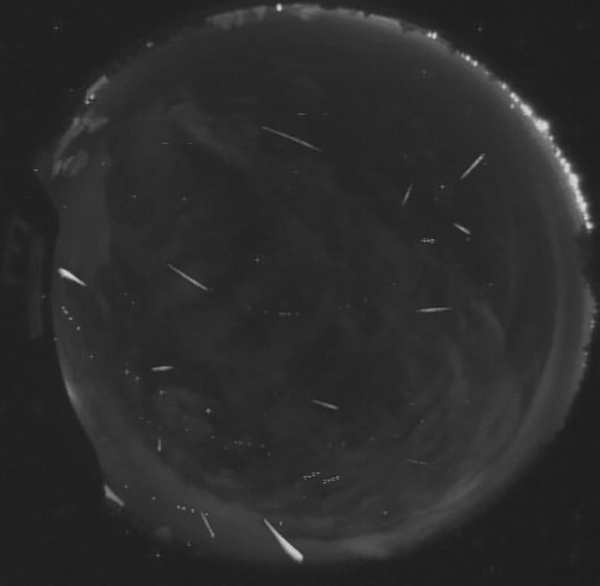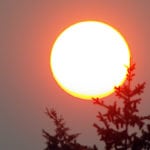Home »

The Geminids are in peak activity
By Rick Nowell
The Geminids are arguably the best and most reliable meteor shower of the year at 140 meteors per hour. The second best are the Quadrantids at 120/hr on January 4 but these last only for a brief few hours. The Perseids are better known, since they occur on August 13 when it’s nice and warm out. But they’re actually number three on the list at 100 meteors per hour.
This year’s Geminid meteor shower pales due to the bright moon, but it has up to 140 meteors per hour, about two per minute. Peak activity is from Friday, Dec. 13 from 7 p.m. to Saturday, Dec. 14 at 4 p.m. MST. This year the bright Moon will be drowning out the fainter meteors to our view so at peak we’ll likely only see 40 meteors per hour (or a meteor every minute and a half).
It’s best to start watching the Geminids by 8 p.m. on Friday evening when Gemini is rising in the east, in the brief darkness before the Moon rises.
 The meteors are the sand, dust and gravel remains of an Apollo asteroid (3200 Phaethon), coming in at speeds of 35km/second. They’re active from Dec. 4 until Dec. 17. So these meteors have been active the past week.
The meteors are the sand, dust and gravel remains of an Apollo asteroid (3200 Phaethon), coming in at speeds of 35km/second. They’re active from Dec. 4 until Dec. 17. So these meteors have been active the past week.
The best views will be from a dark sky area where you can see from horizon to horizon. Find a lawn chair where you can lay down and look up. A warm blanket and hot chocolate will assist in these chilly winter temperatures.
Where to look? The meteors radiate from the constellation Gemini rising in the east (over Orion), which is where the Moon is located tonight so avoid looking there. As you see from this all-night composite photo, the meteors can appear anywhere in the sky. The brighter meteors are generally seen away from Gemini, since meteor streaks seen near Gemini are shorter than meteor streaks seen near the horizon. (And the Moon is there so it will dazzle your eyes).
The above photo shows all meteors seen in the sky over Cranbrook on Dec. 15, 2014.
 Starmap showing Eastern Horizon at 8 p.m. Friday night. The big white dot “MOO” shows the Moon is in the constellation Gemini. The red lines outline the constellation figures, constellation names in green. The Starmap was captured from SkyGlobe software.
Starmap showing Eastern Horizon at 8 p.m. Friday night. The big white dot “MOO” shows the Moon is in the constellation Gemini. The red lines outline the constellation figures, constellation names in green. The Starmap was captured from SkyGlobe software.
For further information check out the International Meteor Organization webpage or
https://www.imo.net/files/meteor-shower/cal2019.pdf.
Lead image: This photo was taken by Robert Ede near Invermere, during the Geminid shower of December 2014. Here you can see three meteor streaks over the constellation Orion. Robert Ede photo
Rick Nowell is Physics Lab Tech at College of the Rockies







